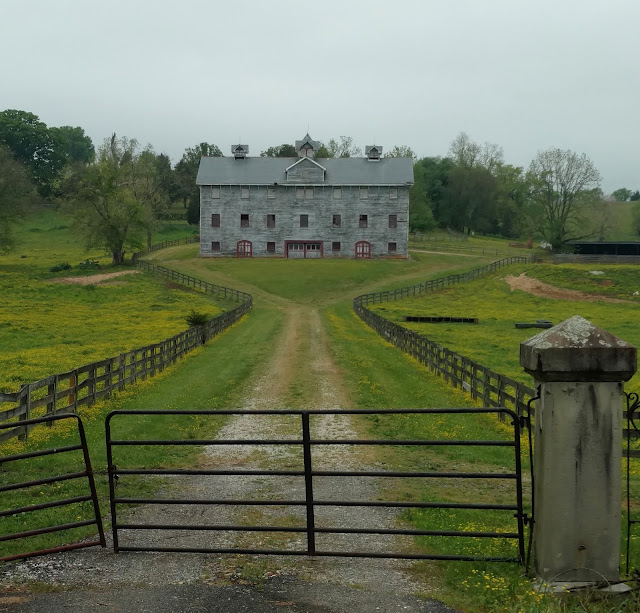Like many things in Virginia, the railroad is steeped in history and on a recent hi rail trip I got to see some of those things first hand. I have been over this territory hundreds of times but usually I don't get to stop, take pictures and really take a good look at what is still left from times past. This time we were doing a signal survey and we had to stop at each signal location. While the big dogs were doing their part in figuring out how we will bring positive train control to the Rivanna subdivision, I was looking around and taking pictures.
The James River Canal
The James River Canal was an effort by George Washington to better connect the mountains of Virginia to Richmond. In 1765 George Washington surveyed the area along the James to plan the route the canal would take. In 1785 the James River Canal company was founded and good old George was named honorary president. The building of the canal was plagued by tough terrain and even once it was built, flooding was an ongoing problem. By 1880 railroads were proving themselves as a more reliable form of moving freight and the canal was sold to the Richmond and Alleghany Railroad company.
Today the canal is still there along much of the James and Rivanna subdivisions most of the walls have fallen in but I did find a few spots where the old blocks still stood. Here are a few pictures from my trip.
 |
| Rock wall along what is left of the canal |
 |
| You can see that nature has overtaken much of the wall |
Thorncliff
When we pulled up to this location we were all in awe of the giant 3 story barn and the old railroad stop that was still standing. It still had much of the Vermont slate on its roof and there was still the remnants of a fireplace inside. We had so much fun checking out the history we almost forgot to look at the signal we were supposed to be looking at.
This one took a little bit more research, as I searched around to get some more history on the place I found a real estate ad from 1914. It claimed the property had 3, three story barns, room for 50 hands and its own private rail station with 4 trains a day. This really made me wonder, who in the world was special enough to have their own private rail station?
After reading through someones typed (like on a typewriter!) dissertation on the history of dairy farming in Virginia I finally found a name. Joseph Reid Anderson. Mr. Anderson joined the Tredegar Iron works company in 1841 and owned the place by 1848. He served as Brigadier General in the civil war, and after he suffered an injury in 1862 he resigned his commission and returned to Tredegar. He was also very involved in local politics until his death in 1892.
Okay, so he was a big industrialist and he held minor political positions and served on the losing side of a war as a Brigadier General, how does that qualify him to get his own private rail station? Easy, Tredegar was the biggest producer of rail and steam locomotives in the south, making Mr. Anderson a pretty popular guy with the railroads. One of the biggest reasons Mr. Anderson was able to produce steel at a lower cost than many others at the time was he was the first person to use slave labor in skilled positions. He did not believe slaves were not smart enough or could not be trusted enough to work in a skilled position. Below are some of the pictures that I took, if you are interested in seeing a picture of what the Thorncliff rail station looked like in 1900 click here.
 |
| Thorncliff rail station |
 |
| Fireplace inside the rail station |
 |
| Three story bank barn Thorncliff Farm |

Thanks for posting. I've enjoyed looking for the old locks from the canal. They are a testament to the rock masons that most are still standing. It is amazing due to they didn't use mortar. Each rock was hand fit.
ReplyDeleteIt really is amazing to see the work that they did. I really enjoyed researching this post, I may do a few more like it. There is a ton of history out there along the tracks.
DeleteTake a note of Holcomb Rock dam, and notice that a lock and a portion of the old canal were rehabilitated and modified to serve as an intake canal for the hydroelectric generator there.
ReplyDeleteThanks for the tip, I go right by there on my way home and I will check it out!
ReplyDelete